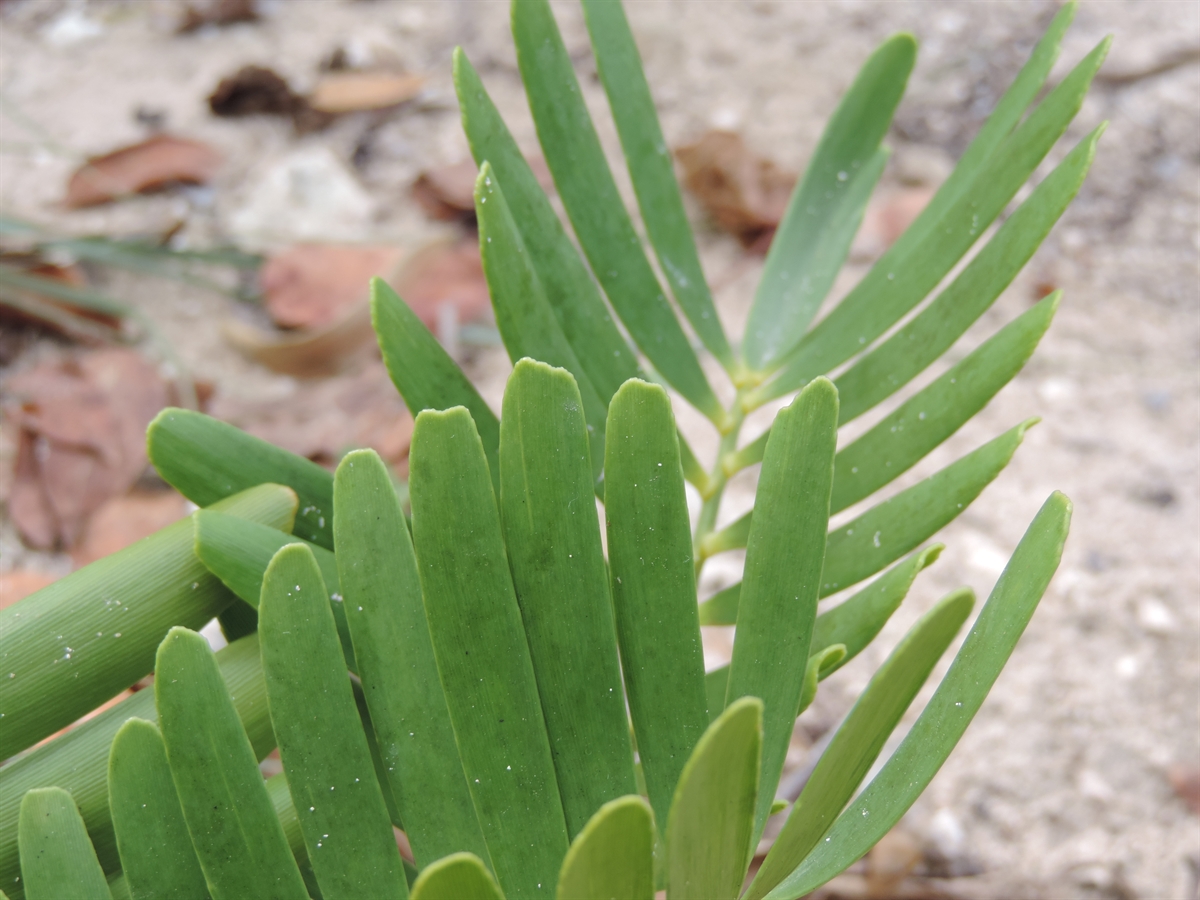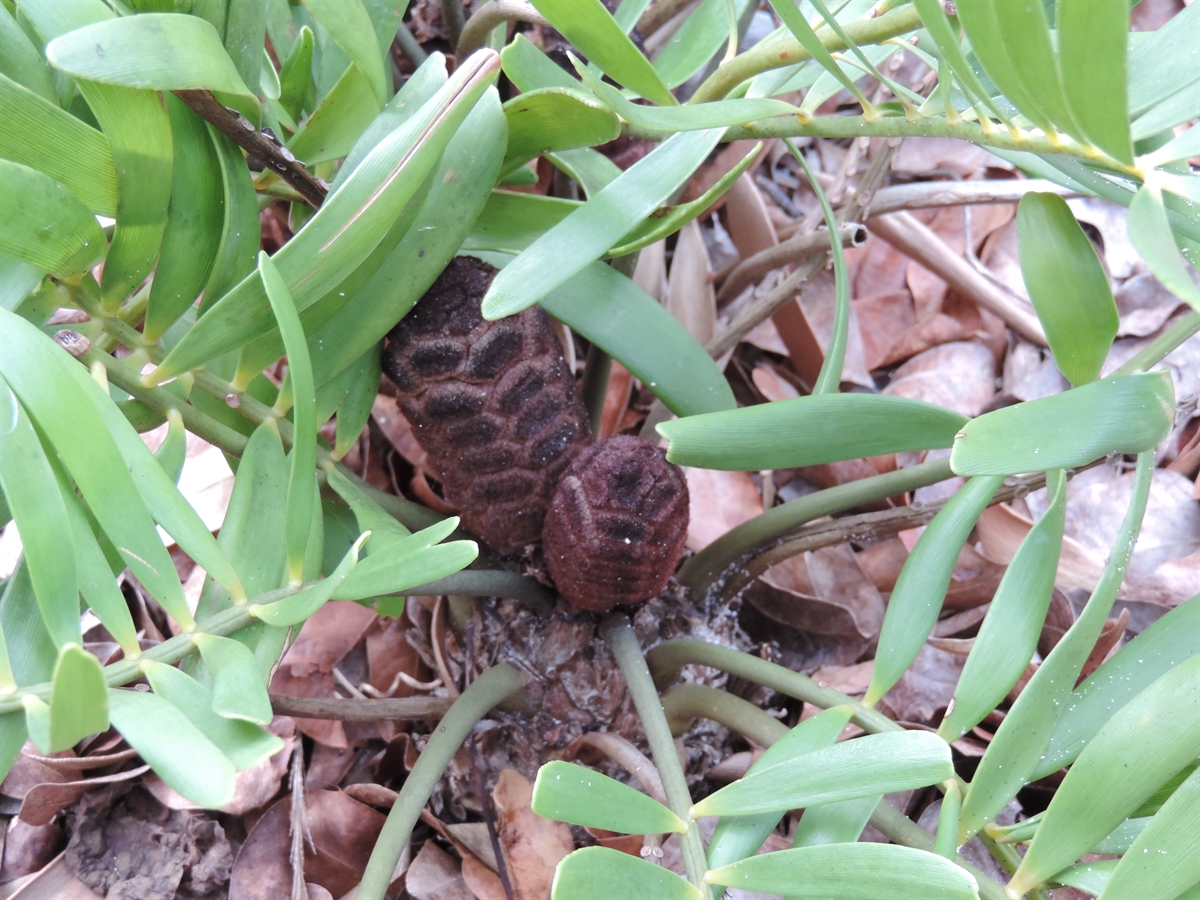Habit: Zamia lucayana grows from an underground vertical stem 15-40 in length and to 15 cm in diameter. Leaves are produced from the top of the tuber. The leaves are pinnately compound, to 0.5 meters in length and covered with rusty brown hairs when young. The leaflets are to 15 cm (typically shorter) in length with a slightly toothed apex and an entire margin (occasionally irregular).
Zamia lucayana is dioecious. The reproductive structures are cones. Microsporangiate cones are solitary or in groups, to 8 cm in length and 2 cm in diameter. There are 15 – 20 series of peltate hexagonal structures, underneath which are the microsporagium.
The megasporangiate cones are solitary, to 13 cm in length and 4 cm in diameter. There are 5-8 series of peltate hexagonal structures, underneath each ovules are located. The entire structure is covered with reddish hairs.
Habitat: Zamia lucayana grows coastal Dry Broadleaf Evergreen Formations- Shrublands/Dwarf Shrublands with an unconsolidated Holocene sand substrate.
Distribution: Zamia lucayana is endemic to the Lucayan Archipelago and only occurs along a section of Atlantic coastline on Long Island.
Medicinal/Cultural/Economic usage: Zamia lucayana is not known to be used medicinally or culturally in the Lucayan Archipelago.
This is a Critically Endangered species that is endemic to the Lucayan Archipelago.
Calonje, M., A. W. Meerow, L. Knowles, D. Knowles, M. P. Griffith, K. Nakamura, J. Francisco-Ortega. 2013. Cycad biodiversity in the Bahamas Archipelago and conservation genetics of the Critically Endangered Zamia lucayana (Zamiaceae) Oryx 47: 190-198.



